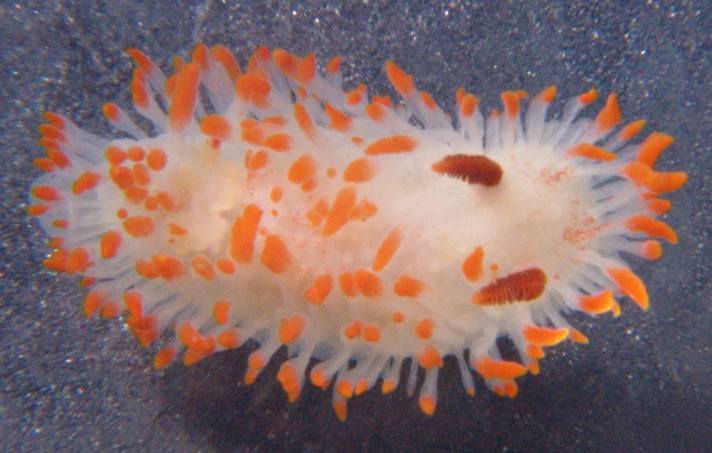Description: This dorid nudibranch has a mid-dorsal anus toward the back of the dorsum, surrounded by the gills. The dorsum has many distinctive narrow, unbranched, club-shaped papillae. Those around the margins are longer while those nearer the center of the dorsum are shorter. The body is white or cream-colored and relatively flat, and the gills are short and white and sometimes difficult to see (photo). A network of spicules can often be seen below the surface of the dorsum (photo). Many of the papillae are tipped with bright orange, but the dorsum itself is not (except in some S. California populations) and the gills are often not either (though they may occasionally be). The rhinophores are perfoliate and orange for most of their length (photo). Length to 2.5 cm.
How to Distinguish from Similar Species:Triopha catalinae is also white and orange but it has fewer dorsal outgrowths and the orange spots can be found on the gills and on the dorsum. Okenia rosacea lives mainly farther south and has a rose-pink body.
Geographical Range: Alaska to Bajia de los Angeles, Baja California, Mexico
Depth Range: Intertidal to 35 m. Mostly subtidal in southern parts of range.
Habitat: On rocks, often near bryozoans
Biology/Natural History: In individuals near the southern end of the range there is a longitudinal row of orange-tipped tubercles or short papillae down the center of the dorsum. In more northern individuals such as this one these central tubercles tend to be white-tipped rather than orange-tipped and are more scattered than in a line, even though the more lateral tubercles and the rhinophores are orange-tipped.
This species feeds on bryozoans such as Hinksina
velata. Spawning is in spring in our
area. Unlike most
nudibranchs, the spiral ribbon of eggs (which are pink) that it lays is
laid flat against the substrate rather than on edge.
| Return to: | |||
| Main Page | Alphabetic Index | Systematic Index | Glossary |
References:
Dichotomous Keys:Carlton, 2007
Kozloff, 1987, 1996 (as Laila cockerelli)
General References:
Behrens,
1991 (As Laila
cockerelli)
Behrens
and Hermosillo, 2005
Harbo,
2011
Kozloff,
1993 (As Laila
cockerelli)
Morris
et al., 1980 (as Laila
cockerelli)
Scientific Articles:
Web sites:
General Notes and Observations: Locations, abundances, unusual behaviors:
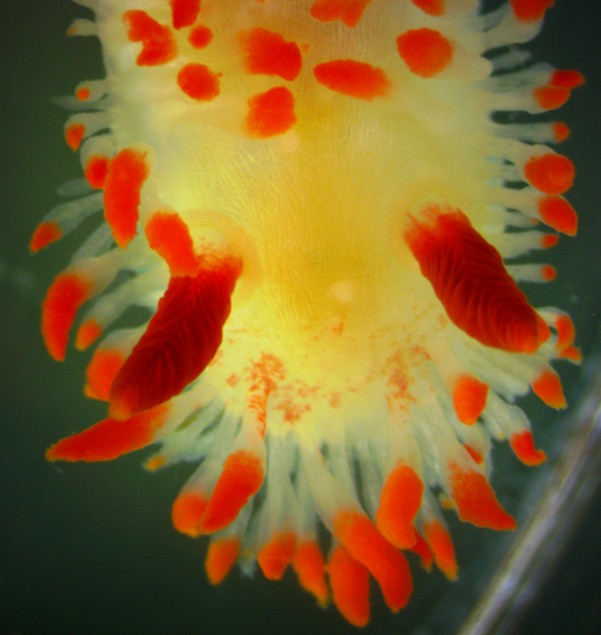
This closeup of the head shows the rhinophores.
Note also that, although this species generally does not have orange
spots
on the dorsum,
a few small scattered orange spots can be seen here on the head.
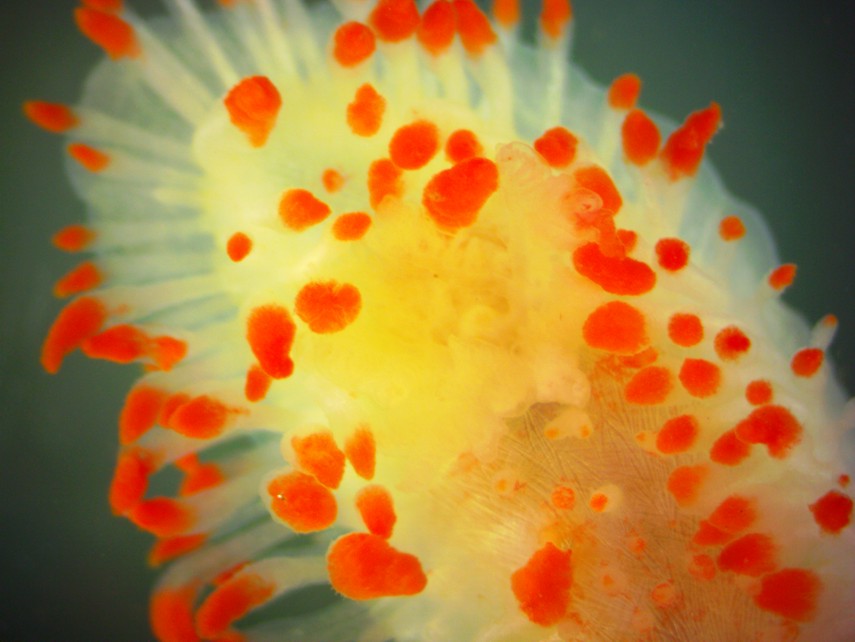
This view of the posterior dorsum
shows the ring of short, white gills and also the network of spicules
below the skin surface that can often be seen in this species.
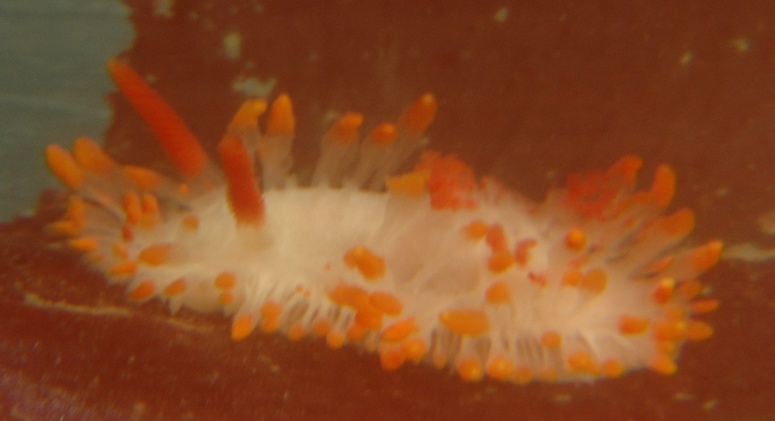
An individual found off Northwest Island in 2007. Photo by
Dave
Cowles
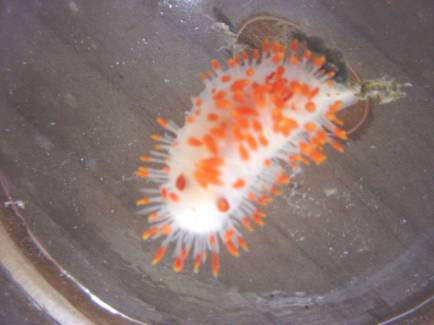
An individual from Coffin Rocks, Photo by Robbie Wheeling,
2002
This
1.7 cm individual was found at about 15 m depth at Sares Head., July
2022. Note the gill tips on this individual are red. Photo by Dave
Cowles
Authors and Editors of
Page:
Dave Cowles (2014): Created original page
CSS coding for page developed by Jonathan Cowles (2007)
Salish Sea Invertebrates web site provided courtesy of Walla
Walla University
